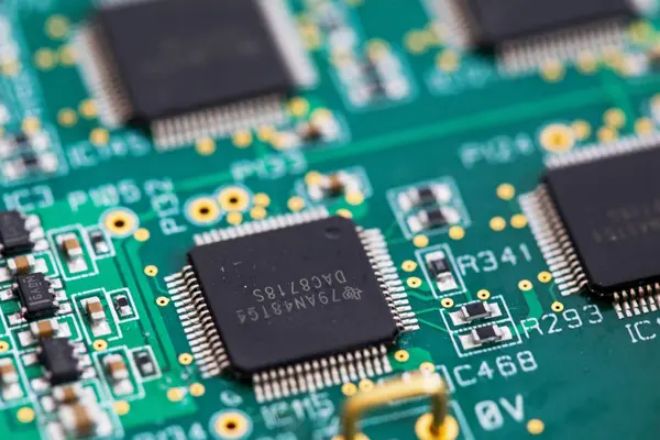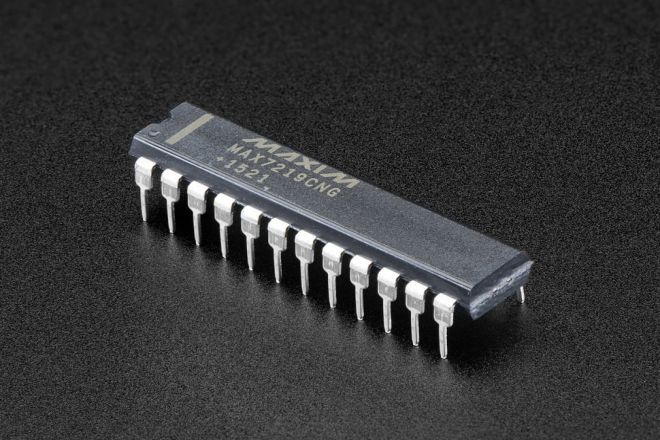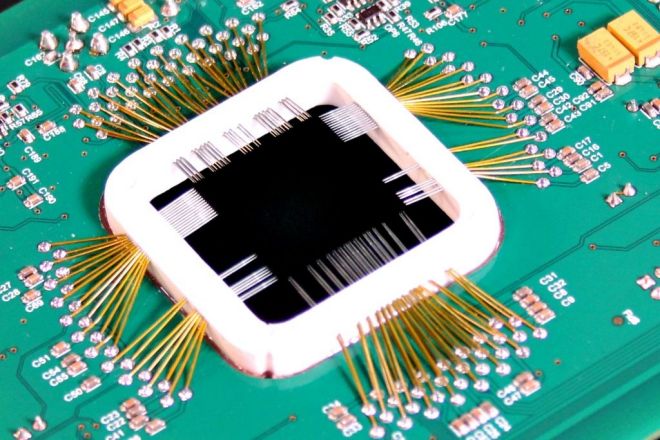介绍

在数字显示技术日新月异的今天, LED显示屏LED显示屏以其亮度高、寿命长、节能、环保等优点,广泛应用于广告、舞台、体育场馆、交通标志等各个领域。
然而在这些亮眼的显示效果和广泛的应用场景背后,却有一个关键的技术支撑——集成电路(IC)。IC作为LED显示屏的核心元器件,不仅驱动和控制每一个LED像素点的亮灭,还负责数据的传输和处理,是LED显示屏能否正常、高效运行的关键。
1、LED显示屏的IC是什么
LED显示屏IC,即集成电路(Integrated Circuit),是LED显示屏不可缺少的核心部件。它犹如显示屏的“大脑”和“心脏”,控制着每一个LED像素点的亮与灭,保证显示屏能正常、高效地工作。以下是LED显示屏IC的功能特性:
- 数据接收与处理
想象一下,你用手机给LED显示屏发送一段视频,首先视频数据需要通过一个叫“数据输入引脚(DIN)”的接口被LED显示屏的IC接收。同时,为了保证视频能顺利播放,还有一个叫“时钟输入引脚(CLK)”的接口,接收一个叫“时钟信号”的东西,这个信号就像一个节拍器,告诉IC什么时候该接收新的数据。
- 数据锁存和传输
当IC接收到这些数据后,并不会立刻显示在屏幕上,而是会先“锁存”起来,确保数据不会丢失或出错。这个过程就像是把重要的文件放在安全的文件夹中。然后,IC会以特定的方式,把这些数据传送到LED显示屏的每一个像素点上。
- 输出控制
当数据准备好显示在屏幕上时,IC 会通过一个叫做“输出使能引脚(OE)”的接口来控制数据的输出。你可以把这个接口想象成一个开关,当它打开时,数据就会像水一样从 IC 中流出,显示在 LED 显示屏上。
- 高精度控制
但仅仅显示数据是不够的,我们还需要确保它看起来足够清晰,颜色足够鲜艳。这时,IC的高精度控制功能就派上用场了。它可以精确控制每个LED像素的亮度和颜色,就像画家在调色板上调色一样。这样,无论你想看高清电影还是华丽的广告,LED显示屏都能完美呈现。
2. LED 显示屏 IC 的类型

LED显示屏用IC的种类很多,按照功能和用途的不同,大致可以归纳为以下几类:
- 驱动芯片
驱动IC是LED显示屏中的关键部件,负责将输入的电信号转换成可以驱动LED灯珠的电流信号,通常具有恒流或恒压输出特性,以保证LED显示屏的稳定性和一致性。
例:MBI5024,这是一款带16位移位锁存器的LED驱动芯片,可以控制最多16颗LED灯珠的亮灭。它的工作原理是通过串行数据输入,时钟信号控制数据传输,锁存,最后通过并行输出口控制LED灯珠的亮灭。
- 控制集成电路
控制IC主要负责接收来自外部的数据信号,并进行解码处理后传送给驱动IC,控制LED显示屏的显示内容。
例:TPIC6B595,这是一款串行输入并行输出的LED显示驱动芯片,适合驱动简单的LED显示器,比如7段数码管等。
- 电源管理IC
电源管理IC主要用于LED显示屏的电源供应和管理,保证显示屏的稳定工作,通常具有功率转换、电压调节、过流、过压保护等功能。
例:有些恒流驱动芯片可以保证输出电流保持恒定,不受输入电压和温度的影响,这对于LED显示屏的亮度和色彩稳定性至关重要。
- 接口集成电路
接口IC用于实现LED显示屏与外部设备或系统之间的通信,如接收控制信号、传输显示数据等。
例:MAX7219/MAX7221是常用的具有级联功能的LED显示屏驱动器,可以通过串行接口连接多个驱动器,实现大规模LED显示屏控制。
- 特殊功能集成电路
特殊功能IC是针对LED显示屏的一些特殊需要而设计的,如灰度调整、色彩校正、智能控制等。
例:有些高端的LED显示屏驱动芯片带有灰度调节功能,可以实现对LED灯珠亮度的精细控制,从而提高显示效果。
在选择LED显示屏IC的时候,需要根据具体的应用场景和需求进行综合考虑,保证显示屏的稳定性和性能。同时,随着LED显示技术的不断发展,新的IC产品和技术也会不断涌现,为LED显示屏的应用带来更多的可能性。
3、IC技术对LED显示屏性能的影响
IC作为LED显示屏的核心部件,其技术对显示屏的性能有着至关重要的影响,以下就IC技术对LED显示屏性能影响的几个关键方面进行介绍:
- 显示效果:
高性能IC可以提供更高的刷新率。刷新率是指LED显示屏每秒更新画面的次数。高刷新率可以保证画面的流畅度和连续性,特别是在播放动态视频或显示高速运动场景时,可以避免画面撕裂或模糊,使画面更清晰,更逼真。
高性能IC还支持更高的灰度等级,灰度等级是指LED显示屏能够显示的色彩层次和亮度变化范围,更高的灰度等级可以呈现更加细腻丰富的色彩和明暗变化,使画面更加生动逼真。
- 能耗与寿命:
优化的IC设计可以降低LED显示屏的功耗。通过采用先进的电源管理技术和节能算法,IC可以精确控制LED灯珠的电流和电压,避免不必要的能源浪费,从而降低显示屏整体的功耗。
这不仅有助于降低运营成本,还有助于减少能源消耗和环境污染。
优化的IC设计还可以延长LED的使用寿命,IC通过精确控制LED灯珠的工作状态,减少LED过热、过压等损坏因素,降低LED的故障率,从而延长显示屏的使用寿命。
此外IC还可实现LED灯珠的自动检测、更换功能,进一步提高了显示屏的可靠性和稳定性。
- 可靠性:
高品质的IC具有更强的抗干扰能力,在复杂的电磁环境下,高品质的IC能够抵抗各种干扰信号的影响,保证显示屏的稳定工作。
避免了显示器出现闪烁、黑屏等故障现象,提高了显示器的可靠性和稳定性。
高品质的IC还具有更高的稳定性和可靠性,通过采用先进的工艺和材料,IC可以在高温、高湿、震动等恶劣环境下保持稳定的性能,保证显示屏在各种复杂环境下正常工作。
此外,高品质的IC还具有更低的故障率和更长的使用寿命,进一步提高了显示屏的可靠性和稳定性。
4. 未来发展趋势

在LED显示屏领域,IC技术是核心驱动力,其未来发展趋势将引领整个行业向着更高性能、更绿色、更智能化发展。以下是几个关键的发展趋势:
- 智能化与集成化:
随着物联网、大数据、人工智能等技术的不断融合,LED显示屏将越来越智能化,IC技术将实现更高水平的智能控制,如自适应亮度调节、智能内容推荐、远程控制等。
使得显示屏能根据环境和使用场景自动调整显示参数,提供更加智能、便捷的用户体验。
同时集成化也是未来发展的重要趋势,将多种功能集成到单一IC芯片中,可以简化系统结构,提高系统的可靠性和稳定性。
例如将驱动、控制、电源管理等功能集成到一个芯片上,可以大大降低系统复杂性和成本。
- 绿色节能:
随着全球对环保节能的日益重视,LED显示屏将朝着更加绿色节能的方向发展,而IC技术将在这个过程中起到关键作用,通过优化算法,降低功耗,提高能源利用效率,实现更低的能耗,更长的使用寿命。
比如通过采用先进的电源管理技术和节能算法,IC可以精确控制LED灯珠的电流和电压,减少不必要的能源浪费。
同时,智能节能功能还可以根据环境和使用场景自动调整显示屏的亮度和色彩,进一步降低能耗。
- 定制和个性化:
随着市场的不断细分,消费者需求的多样化,LED显示屏市场将更加注重定制化、个性化需求,IC技术将为实现这一需求提供有力的支持。
通过可配置的IC设计和灵活的软件控制,LED显示屏可以根据不同的应用场景和用户需求进行定制,例如可以根据不同的屏幕尺寸、分辨率、亮度、色彩等参数进行定制,满足不同场合的显示需求。
同时IC技术可以支持多种数据接口和控制协议,方便用户连接和控制各种外部设备。
结论
通过以上分析我们不难看出IC在LED显示屏中起着至关重要的作用,它不仅是LED显示屏正常工作的基础,更是提高显示屏性能、实现各种先进功能的关键。随着技术的不断进步和市场需求的变化,未来IC在LED显示屏领域的应用将更加广泛和深入。
最后,如果您想了解更多关于LED显示屏的知识, 请与我们联系。

一个回复
我知道了